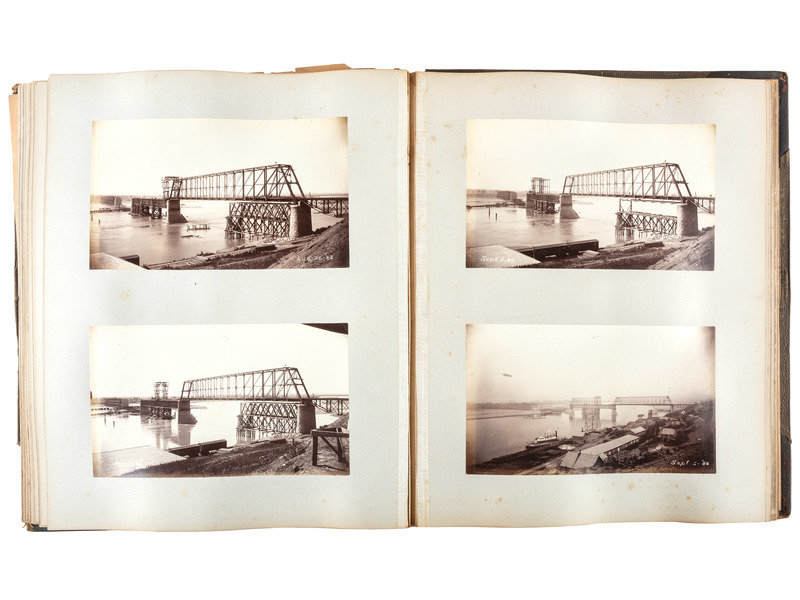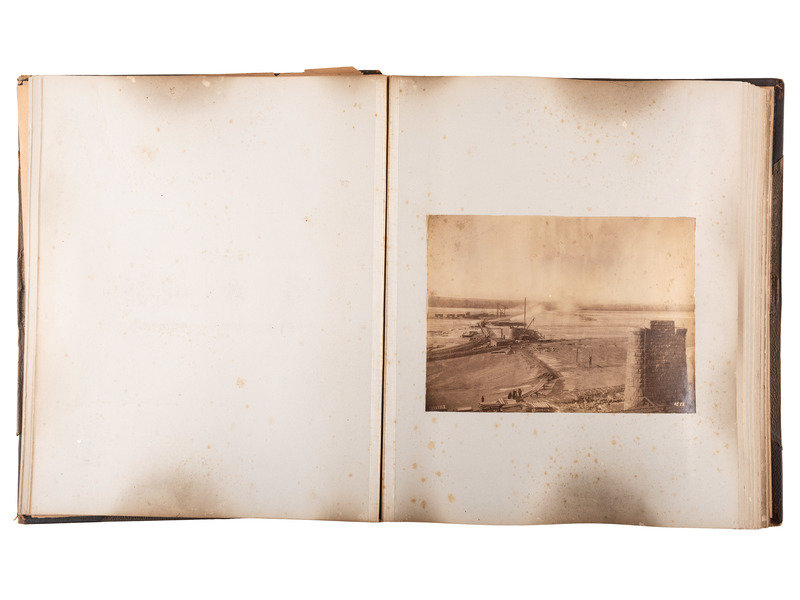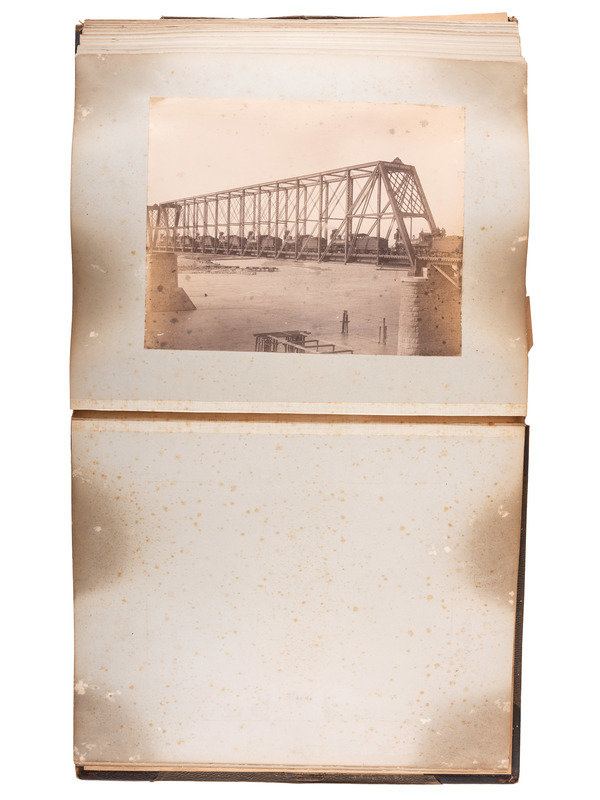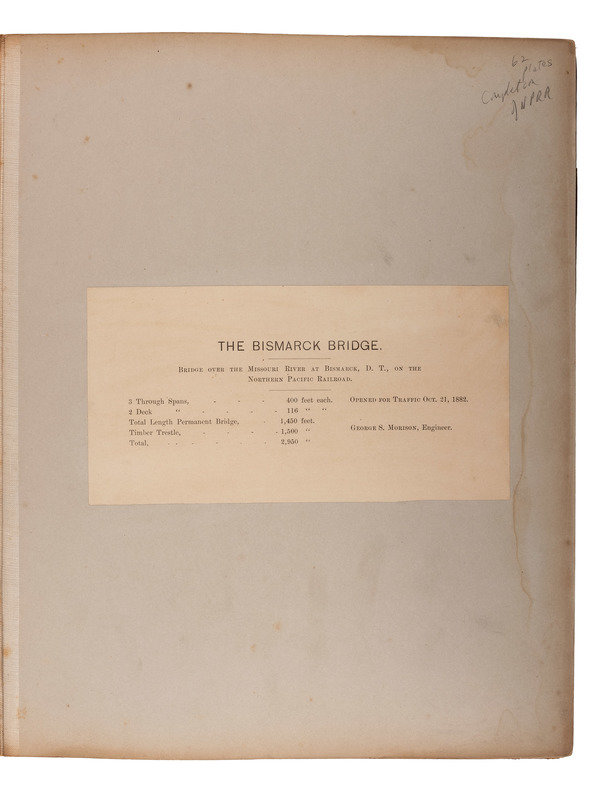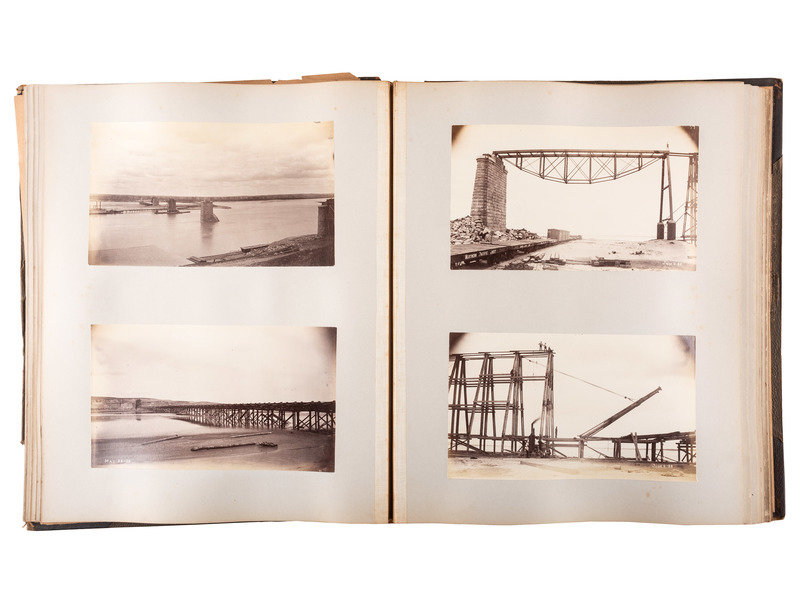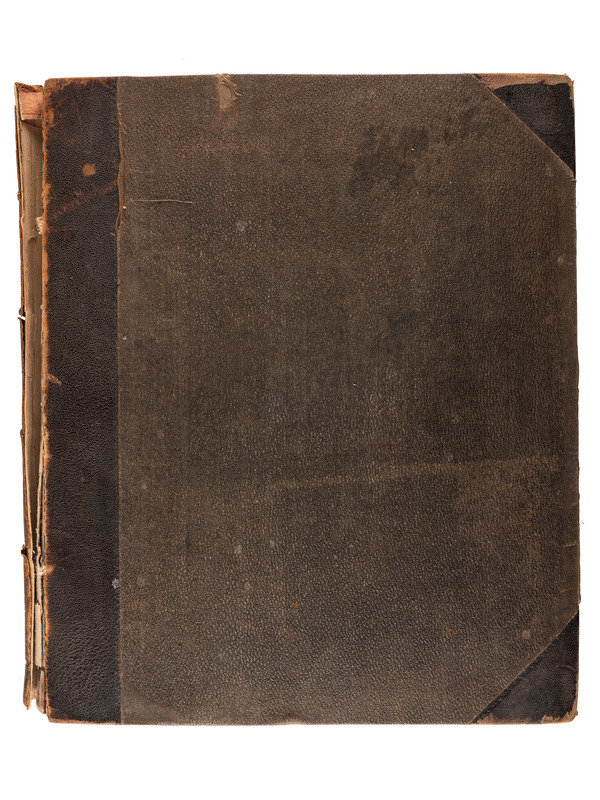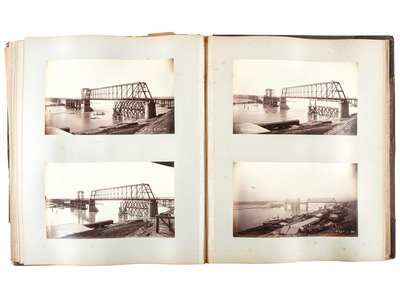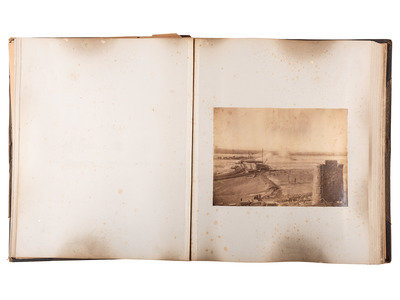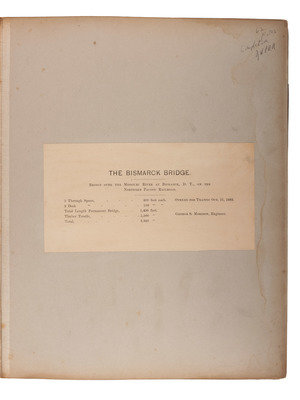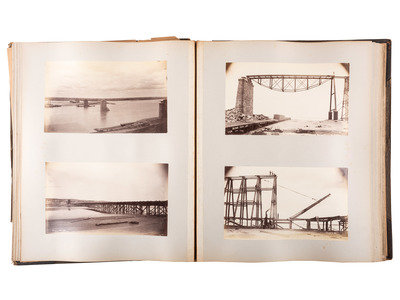Condition Report
Contact Information
Auction Specialist
Lot 280
[WESTERN AMERICANA]. Album of photographs showing the construction of the "Bismarck Bridge." [Dakota Territory]: [F. Jay Haynes], [1882].
Sale 1046 - American Historical Ephemera and Photography Featuring the Civil War and American Militaria Collection of Bruce B. Hermann
Lots 1-296
Jun 21, 2022
10:00AM ET
Lots 297-560
Jun 22, 2022
10:00AM ET
Live / Cincinnati
Own a similar item?
Estimate
$6,000 -
8,000
Price Realized
$3,750
Sold prices are inclusive of Buyer’s Premium
Lot Description
[WESTERN AMERICANA]. Album of photographs showing the construction of the "Bismarck Bridge." [Dakota Territory]: [F. Jay Haynes], [1882].
Folio (11 1/4 x 13 5/8 in.) 287 x 345 mm. 62 mounted albumen photographs, first and last image 8 1/4 x 6 in., majority approx. 7 5/8 x 4 1/2 in. (Occasional spotting, minor toning.) One-quarter dark brown morocco with cloth boards, spine in 5 compartments with 4 raised bands, gilt-lettering to 2. (front board detached, spine with separations, some scuffing).
Printed sheet to the preliminary leaf reads: "The Bismark Bridge. Bridge over the Missouri River at Bismarck, D.T., on the Northern Pacific Railroad. Opened for Traffic Oct. 21, 1882. George S. Morison, Engineer." With statistics. "3 Through Spans, 400 feet each. / 2 Deck Spans, 116 feet each. / Total Length Permanent Bridge, 1,450 feet. / Timber Trestle, 1,500 feet. / Total, 2950 feet." Several images are dated in-negative.
The first image shows the site with one complete pier and a second underway, followed by a series of photographs showing the construction process of the bridge. Also includes a view of two men outside the Engineer's office and the final image of the complete bridge with a laden train crossing over. The images were captured by F. Jay Haynes (1853-1921) who was the official photographer of the Northern Pacific Railroad.
The Northern Pacific Railway was a transcontinental railroad that began construction in 1870 after receiving nearly 40 million acres of land grants which were approved by Congress in 1864. The line originated in Duluth, Minnesota, and terminated in Tacoma, Washington, connecting the Great Lakes with Puget Sound. Already behind the aspirational completion deadline by 1879, Northern Pacific decided to expend a great amount of capital to cross the Missouri River, a major obstacle and considered the most treacherous to bridge especially due to powerful ice jams. The site near Bismarck, Dakota Territory was chosen as it provided the shortest route between the existing tracks on either side of the river, and the bedrock cliffs on the east bank would better resist erosion. This was, however, the widest area of the river which lead architect, George Morison, helped to mitigate by creating a dike to narrow the river. He also built 2 additional piers with metal-coated edges upstream to break up ice floes. Construction on the piers began on 1 September 1881 and was completed by 3 June 1882. The central piers were achieved by the use of pneumatic caissons, which were still a relatively new technology in America.
Property of a New York Lady
